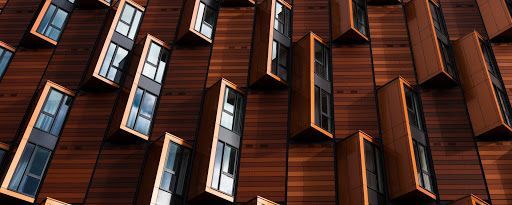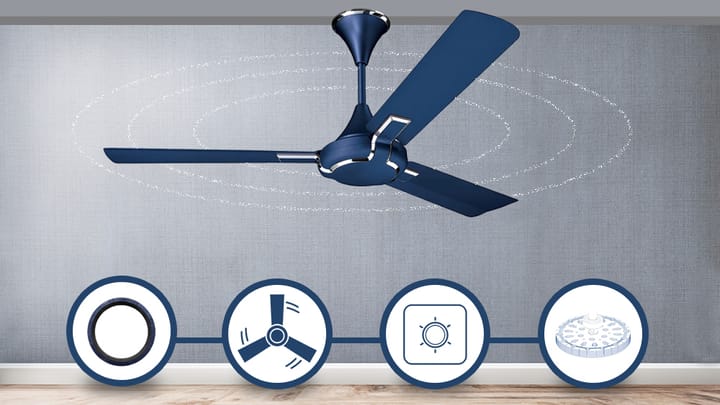A Mitigation Matrix to address the UHI Impact

Article by - Shilpa TM, Suparna Havelia, Anurag Bajpai
"We are uniquely placed through our actions, to shape the future of consumption in cities" - Sir David Attenborough
The Urban Heat Island (UHI) issue has been in the spotlight for over a decade in the building industries, yet crucial policies or reforms are still on hold to be shaped in India. India is home to an extraordinary variety of climatic regions, ranging from tropical in the south to temperate and alpine in the Himalayan north, where elevated regions receive sustained winter snowfall. Due to its varied topography, the effect of climate is unpredictable but not inevitable. A study conducted by Richard T Corlett (Center for Integrative Conservation, Yunnan, China) states the effects of steadily rising concentrations of greenhouse gases on the climate may be less obvious to tropical residents because they are overlain by considerable natural variability. But the recent survey conducted by the National Disaster Management Authority, India claims nearly 5000 deaths due to the outburst of the heat waves alone in the last 4 years, which is 60% more combined in the last 20-year history of India for major metropolitan cities, endorses otherwise. The exacerbated impacts of naturally occurring heat waves due to higher daytime temperatures, reduced night-time cooling, and higher air-pollution levels are conditioned by the Urban Heat Island. Given this, it seemed necessary to consider the main reasons for the stagnation of the profile of movements and strategies in India, to include simple measures in the state and municipal bylaws.

The team at GreenTree Global has conducted various studies in this segment, the finding of which are presented in this article.
The Urban Heat Island Effect

Learnings from Medieval India
While India may not be the precursor of strategic mitigation policies towards Urban Heat Island, medieval cities such as Jodhpur have always maintained themselves amidst the Thar Desert. Jodhpur, known as Rajasthan's Blue City, India, originated in 1459 AD had to unveil various natural cooling systems to maintain such dense clustering of buildings. Some of the features include sun-controlled orientation and structural projections, cooling of sunlit surfaces by use of fins; massive construction for roofs and walls and courtyards yet the most interesting part is the cloak of blue tint over the buildings. The soothing effect of the shade not only captivates the eyes and repels parasites, but also helps to divert most of the solar radiations. The formal study based on SRI paints deflecting solar radiation is under conceptual development, and GreenTree Global and its team are doing an intense study on the same. Readers interested in providing additional information on the subject should contact [email protected].

Are Authorities solely to blame?
The repercussions created by the Urban Heat Island were not created by themselves; rather one must blame the unstructured innovative inventions that satisfy one's leisure. Disregard for its nature by introducing materials alien to the environment, the continuous manipulation of the space acquired, the stupidity of carrying on with the actions, even after the warning and the ultimate failure to take responsibility for one's actions, does not seem to be just the issues of the authorities. Major cities such as Delhi, Mumbai, Hyderabad, Kolkata has found that there was an average difference of three degrees between different neighborhoods during heat waves and some neighborhoods were six degrees cooler than the others due to difference in shade, tree cover and lack of dense built-up areas.


A variety of strategies to mitigate the effects of the urban heat island have been identified. Many of them are as simple as painting the outer walls in white in other words, using paints with high solar reflective index (SRI), yet the wild imagination runs to paint them in rainbow colours. This shows a lack of public awareness and concrete guidelines that should be put forward by the authorities to address.
The Way Forward




UHI mitigation strategies - Matrix of Simplicity!
A coherent development that allows flexibility in the use of space, universal accessibility and sensitizes the user to the environmental impact, and encourages appropriate behavioral changes at an individual level to the National level is what India must adapt. Currently, along with this year’s COVID -19 pandemic, the record-breaking severe weather threatens health. Hospitals and urban health centers are already under stress and to counteract lethal heat, India's cities and regions are taking strong action to build resilience and protect communities. The National Disaster Management Authority (NDMA) guidelines, 2019 along with Ahmedabad Heat Action Plan, 2013 are ramping up across the country to implement extreme heat warning systems and preparedness plans.

The cities of Ahmedabad in Gujarat and Hyderabad in Telangana are intensifying cool roofing schemes. Cool roofs reflect sunlight and absorb less heat. Depending on the setting, cool roofs can help keep indoor temperatures lower by 2 to 3°C (3.6 - 5°F) as compared to traditional roofs, and to foster quick repetition among citizens, the cool roofs were installed at a cost as low as Rs. 1.5/- per sq. ft. At the national level, the Indian Cooling Action Plan (ICAP) released in 2019 focuses on reducing the demand for air conditioning with cool roofs as a major solution.

Although this is a beginning, as a collective, each individual can make an effort to mitigate the effect of the urban heat island. A careful choice of material, opting for products with high Solar Reflective Index (SRI) , integrating natural vegetation and water features into urban designs, purchase of BEE 5-star-rated mechanical machines will help us make a long journey to combat this presidential climate change.


